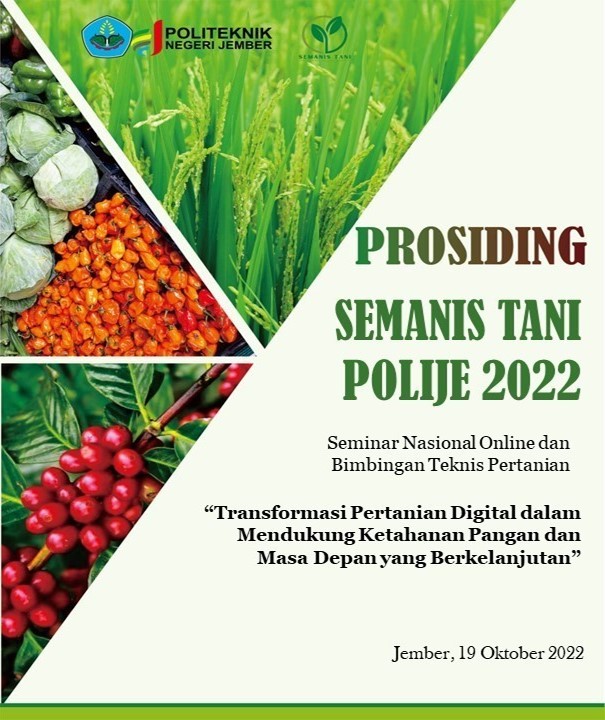Konsep Ekonomi Sirkular Pada Industri Tekstil Alami : On Farm – Off Farm Budidaya Tarum Sebagai Pewarna Alami
DOI:
https://doi.org/10.25047/agropross.2022.324Kata Kunci:
Circular Economy, Sustainable Development Goals, Waste, Textile Industry, Natural DyesAbstrak
The research to a circular economy requires reducing waste because it has urgency for the implementation of the Sustainable Development Goals (SDGs). One sector that has a high potential in implementing a circular economy in Indonesia is the textile industry. The synthetic textile industry has a large number of residual or waste materials that are harmful to humans and the environment. On the one hand, the natural dye textile industry uses main materials from plants that are environmentally friendly. In fact, the natural dye industry still produces waste both during plant cultivation and process fermentation of natural dye plants. This paper explores the circular economy potential in the natural dye textile industry of tarum (Indigofera tinctoria) from on farm to off farm. This data presents data collected through a survey, observation, and interview technique. These were analyzed using descriptive methods with observation techniques and literature studies. Results show that a circular economy concept has a potential in implementing sustainable concepts to farmers, industry, producers, and consumers so they can produce zero waste and reuse the natural dye industry by-products in order to support SDGs.
Unduhan
Referensi
Budiastuti, M.T.S., Pujiasmanto, B., Sulistyo, T.D., Nurmalasari A,I., & Setyaningrum, D. (2020). Pemanfaatan Limbah Ekstraksi Indigofera tinctoria L. sebagai Pupuk Organik pada Usaha Batik Pewarna Alami di Sukoharjo. PRIMA: J of Community Empowering and Services, 4(2), 109-119. DOI: 10.20961/prima.v4i2.44013. Bappenas. (2021). Manfaat Ekonomi Sirkular. URL: https://lcdi-indonesia.id/wp-content/uploads/2021/02/Ringkasan-Eksekutif-Manfaat-Ekonomi-Sosial-dan-Lingkungan-dari-Ekonomi-Sirkular-di-Indonesia.pdf.
Budiastuti, M.T.S., Supriyono., Manurung, I.R., Setyaningrum, D., Nurmalasari, A.I., & Arista, N.I.D. (2021). The Role of Organic Fertilizer from Natural Dye Waste and Mycorrhizal Inoculation on The Growth of Indigofera tinctoria L. IOP Conf. Series: Earth and Environmental Science, 90, 1-7. DOI:10.1088/1755-1315/905/1/012011.
Fatimah, Y.A., Govindan, K., Murniningsih, R., & Setiawan, A. 2020. Industry 4.0 Based Sustainable Circular Economy Approach for Smart Waste Management System to Achieve Sustainable Development Goals: A Case Study of Indonesia. J Clean Prod, 269:1-15. DOI: 10.1016/j.jclepro.2020.122263.
Farid, M.A.A., Roslan, A.M., Hassan, M.A., Hasan, M.Y., Othman, M.R, & Shirai, Y. (2020). Net Energy and Techno-Economic Assessment of Biodiesel Production from Waste Cooking Oil Using a Semi-Industrial Plant: a Malaysia Perspective. Sustain Energy Technol Assess, 39, 1-11. DOI:10.1016/j.seta.2020.100700
Hariri, M.F., Chikmawati, T., & Hartana, A. (2017). Genetic Diversity of Indigofera tinctoria L. in Java and Madura Islands as Natural Batik Dye Based on Intersimple Sequence Repeat Markers. J Math Found Science, 49(2), 105-115. DOI: 10.5614/j.math.fund.sci.2017.49.2.1
Martuti, N.K., Hidayah, I., & Margunani, M. (2019). Pemanfaatan Indigo Sebagai Pewarna Alami Ramah Lingkungan bagi Pengrajin Batik Zie. Panrita Abdi-Jurnal Pengabdian pada Masyarakat, 3(2), 133–143.
Molano, J.F.G., Alba, J.D.P., & Guevara, L.A.P. (2021). Characterization of Composted Organic Solid Fertilizer and Fermented Liquid Fertilizer Produced from The Urban Organic Solid Waste in Paipa, Boyacá, Colombia. Int J Recycl Org Waste Agric, 10(4), 379-395. DOI: 10.30486/ijrowa.2021.1901014.1083.
Ridwan, Prasetyo, S.D., Kusuma, A.C., Rahman, R.A., & Suyitno. (2019). Recent Progress of Biogas Produced from The Waste of Natural Indigo Dyes for Electricity Generation. AIP Conf Proceed, 2097. DOI: 10.1063/1.5098200
Sihta, F., Suyitno, Heru, W.A., & Tanding, R. (2018). Enhancing Biogas Quality of Indigofera Plant Waste Through Co-Digestion with Cow Dung. In: MATEC Web of Conferences, 154, 1-4. DOI: 10.1051/matecconf/201815402001.
Suyitno, Ridwan, Arifin, Z., & Pranolo, S.H. (2019). The Effect of Biogas Pressure in The Performance and Emission of Spark Ignition Engine. IOP Conf. Series: Materials Science and Engineering, 694: 1-6. DOI: 10.1088/1757-899X/694/1/012022.
Mainardis, M., Cecconet, D., Moretti, A., Callegari, A., Goi, D., Freguia, S., & Capodaglio, A.G. (2022). Wastewater Fertigation in Agriculture: Issues and Opportunities For Improved Water Management And Circular Economy. Env Pollution, 296(1-17). DOI: 10.1016/j.envpol.2021.118755.
Harahap, L, & Dwiningsih, N. (2022). Pengenalan Ekonomi Sirkular (Cir-cular Economy) bagi Masyarakat Umum. J Pengabdian Masyarakat, 1(2), 135-141. DOI : 10.55983/empjcs.v1i2.68
Bag, S., Wood, L.C., Mangla, S.K., & Luthra, S. (2020). Procurement 4.0 and Its Implications on Business Process Performance in a Circular Economy. Resources, Conservation and Recycling, 152, DOI: 10.1016/j.resconrec.2019.104502
Kapoor, R., Ghosh P, Kumar M, Sengupta S, Gupta A, Kumar SS, Vijay V, Kumar V, Vijay VK, & Pant D. (2020). Valorization of agricultural waste for biogas based circular economy in India: A research out-look. Bioresource Technology, 304, ISSN 0960-8524, DOI: 10.1016/j.biortech.2020.123036
Schroeder, P., Anggraeni, K., & Weber, U. (2019). The Relevance of Circular Economy Practices to the Sustainable Development Goals. Journal of Industrial Ecology, 23(1), 77-95, ISSN 1088-1980, DOI: 10.1111/jiec.12732
Chojnacka, K., Moustakas, K., & Witek_krowiak, A. (2020). Bio-Based Fertilizers: A Practical Approach Towards Circular Economy. Bioresource Technology, 295, 1-11. DOI: 10.1016/j.biortech.2019.122223
Unduhan
Diterbitkan
Cara Mengutip
Terbitan
Bagian
Lisensi
Hak Cipta (c) 2022 Nor Isnaeni Dwi Arista

Artikel ini berlisensi Creative Commons Attribution 4.0 International License.
Hak cipta (Copyright) artikel yang dipublikasikan di Agropross : National Conference Proceedings of Agriculture dipegang oleh penulis (Copyright by Authors) di bawah Creative Commons Attribution 4.0 International License (CC-BY). Sehingga penulis tidak memerlukan perjanjian pengalihan hak cipta yang harus diserahkan kepada redaksi.






